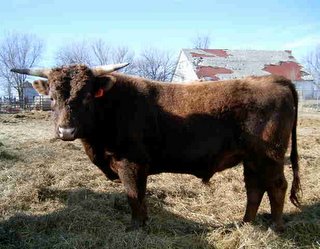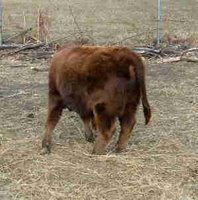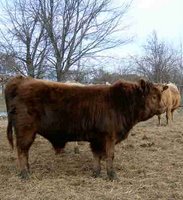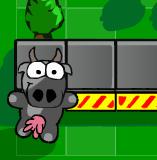
Scale of Points for Dexter Bulls1.
Head: masculine in character, finely cut, not too short, horns well set on without coarseness at base, forehead broad, eyes prominent and lively, nostrils wide and expansive. -- 10
2.
Neck: long, arched, muscular, heavy. -- 4
3.
Withers: strong but not too wide. -- 4
4.
Shoulders: flat and sloping, indicating style and liberty. -- 4
5.
Chest: broad and deep. -- 6
6.
Barrel: hooped, well ribbed up, and of good length. --10
7.
Back: broad over the loins, the top line being straight from withers to tail. --10
8.
Hips: wide apart, but not too prominent. -- 4
9.
Rump: long, broad and level, with tail neatly set in. -- 10
10.
Hind Quarters: wide, the legs when viewed from behind being straight and without nearness when walking. -- 10
11.
Rudimentary Teats: well-developed, set horizontally, wide apart and away from the scrotum. -- 4
12.
Skin: mellow, flexible to the touch, fairly thin, carrying a good coat of hair. White permitted on belly, scrotum and switch. -- 6
13.
Flesh: level, with an entire absence of unevenness or cushions. --10
14.
Carriage and action in walking: gay and vigorous. -- 4
15.
General appearance: symmetrical. -- 4
From the book "Dexter Cattle" by John Hays available online from: PDCA Sale Barn.


















